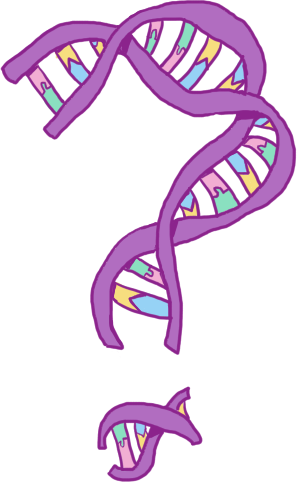Introduction
Contents
6.1. Introduction¶
As we explored in chapter 2, there is a complex web of interactions between proteins and other molecular machinery that lead to phenotype. Our current understanding of how phenotype arises from genotype tells us that knowing which proteins can be produced isn’t necessarily enough of a clue to tell us about phenotype. Liver cells and heart cells have the same DNA, but it’s how that DNA is used (what genes are expressed in the cell) that leads to the difference between those cell types. Since larger scale phenotypes will follow from cellular differences, we expect gene expression data to be a useful measure for phenotype prediction.
This is backed-up by data: disease-associated genes are generally over-expressed in the tissue they cause symptoms in, with the exception of cancer-associated genes[201,202]. This can and has already been leveraged effectively as part of some gene and variant prioritisation methods [203,204].
6.1.1. Motivation: improving phenotype and protein function prediction¶
The performance of the snowflake predictor led me to focus my efforts on finding an answer to a much smaller piece of the genotype-to-phenotype puzzle. As mentioned in the previous chapter’s discussion, some predictions of a protein’s phenotype are incorrect because the protein is not produced, even though they do have a structure that means that they could be involved in the pathway if they were present. To understand if this is the case, we need to know as a minimum if a gene is ever expressed a relevant context. This would rule out, for example, proteins that are predicted to be associated with eye health, but are only ever produced in developing limbs.
Machine learning methods are currently the most successful class of protein function predictors. While this is promising for answering one aspect of the problem (“what are the functions of a given protein?”), they do not always attempt to answer how or why. Structural or sequence methods that estimate protein function based on, for example conservation or structure, counter this problem, but they are currently less accurate: one of the reasons for this might be the lack of inclusion of cell context. Few of these methods include tissue-specific gene expression information (such data was completely missing in the first and second CAFA competitions). Filtering out predictions where genes are never expressed in a relevant tissue may help in protein function prediction, just as in phenotype prediction.
6.1.2. When are transcripts “expressed”?¶
The idea behind Filip is that some proteins are predicted to affect phenotypes that they are unable to affect, because the environment in the tissue or cell means that the protein isn’t around to perform it’s function (or fail to).
And we have a measure of gene expression for which many proteins have 0 counts (and therefore 0 TPM) in many tissues, so we could apply the filter to this cut-off.
But is it meaningful to do so?
Like all chemical reactions, transcription is a stochastic process; there is an element of randomness; to describe if a transcription event will happen at a specific moment you have to use statistics. Genetically identical organisms with the same environment have different measured gene expression patterns[205] and the same can be said for single cells from the same organism[206]. The reason that it’s hard to predict with precision whether a given protein will be transcribed at a given moment is that it depends on the concentration of different molecules in the cell and the energy of the system. Transcription events which have a very low probability of occurring will happen sometimes and we will measure this. If we sequenced the transcriptome in infinite depth, we might expect all transcripts to be expressed at some level.
When we look at expression data for a sample, it will just be a snapshot of the transcription in that sample, and one that isn’t necessarily representative of what’s happening all the time.
Very low count values in a sample are extremely common, and these are usually considered to be difficult to distinguish from transcriptional noise: low levels of transcription with little effect are often randomly happening in the cell.
In addition to the biological stochasticity (which could possibly create phenotypic differences), RNA-Seq is sensitive to technical experimental artefacts (batch effects) due to differences in RNA extraction and library preparation[210].
In both cases, it is low counts where this is most difficult to correct for.
So it isn’t necessarily meaningful to take all genes expressed above 0 TPM as a sensible cut-off for whether a gene counts as “expressed” or not in a tissue: when I dichotomise proteins as “expressed” or “not expressed”, I am using this as a convenient shorthand for “meaningfully expressed” or “not meaningfully expressed”.
We also know that proteins that do cause phenotypes are likely to be highly expressed in tissues related to the phenotype. This means that we definitely want to keep protein-phenotype predictions where proteins are produced at high levels in the tissue of interest. The question becomes: when do TPM levels become low enough that we would want to exclude them?
